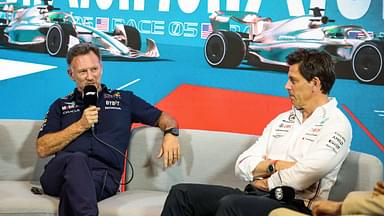Lewis Hamilton saw his Australian GP come to a premature end stemming from an engine failure. Despite weekend struggles and a P11 start, he briefly reached points before retiring. Addressing the engine issue that led to Hamilton’s retirement, James Allison confessed on Mercedes’ Race Debrief, that the team wasn’t entirely sure what caused it.
Speaking about Hamilton’s engine failure, Allison said that there was still ambiguity over what happened. He revealed that at the time they were shooting the video, the engine was being boxed up to be shipped to Brackley. Until the engineers at Brackley could confirm what happened, others could only guess what malfunctioned.
“All we know is the symptoms at the time, which was a rapid loss of oil pressure followed by a shutdown of the engine to protect it. Because when you’ve got catastrophic loss like that, the best thing you can do for the future is kill it there and then.”
Allison explained that in such cases, it is crucial to kill the car as soon as possible to preserve the components. Experts can then assess the same and understand the chain of events that potentially caused the breakdown. It allows them to work on finding appropriate solutions for the future and avoid repetition of the issues. Should one continue to operate the machinery, it could end up as “molten metal.”
Allison reflects on the strategy to have Lewis Hamilton start on softs in Australia
In the same video, Allison also addressed Mercedes’ strategy to start Lewis Hamilton on the soft tires. The Briton did not have the best starting position and needed to make up places. With the soft tires, Hamilton could have an early advantage over those immediately in front of him.
Furthermore, Mercedes anticipated an early safety car, which isn’t unusual in the opening laps of the Australian Grand Prix. The thought process also led to Mercedes expecting a two-stop race, which would allow them to hold an advantage over some of their competitors.
Mercedes‘ strategy was tailor-made for Lewis Hamilton, given his poor qualifying. The circumstances of the race played another pivotal role in the Silver Arrows expecting a two-stop race. However, a safety car came later, and Hamilton had to pit in Lap 8, losing out on his potential advantage. Soon after, mechanical issues arose for the 7x world champion, adding to his worries.
Eventually, the Mercedes strategy went completely out of the window as Hamilton suffered complete power loss and had to call his time on the race.







